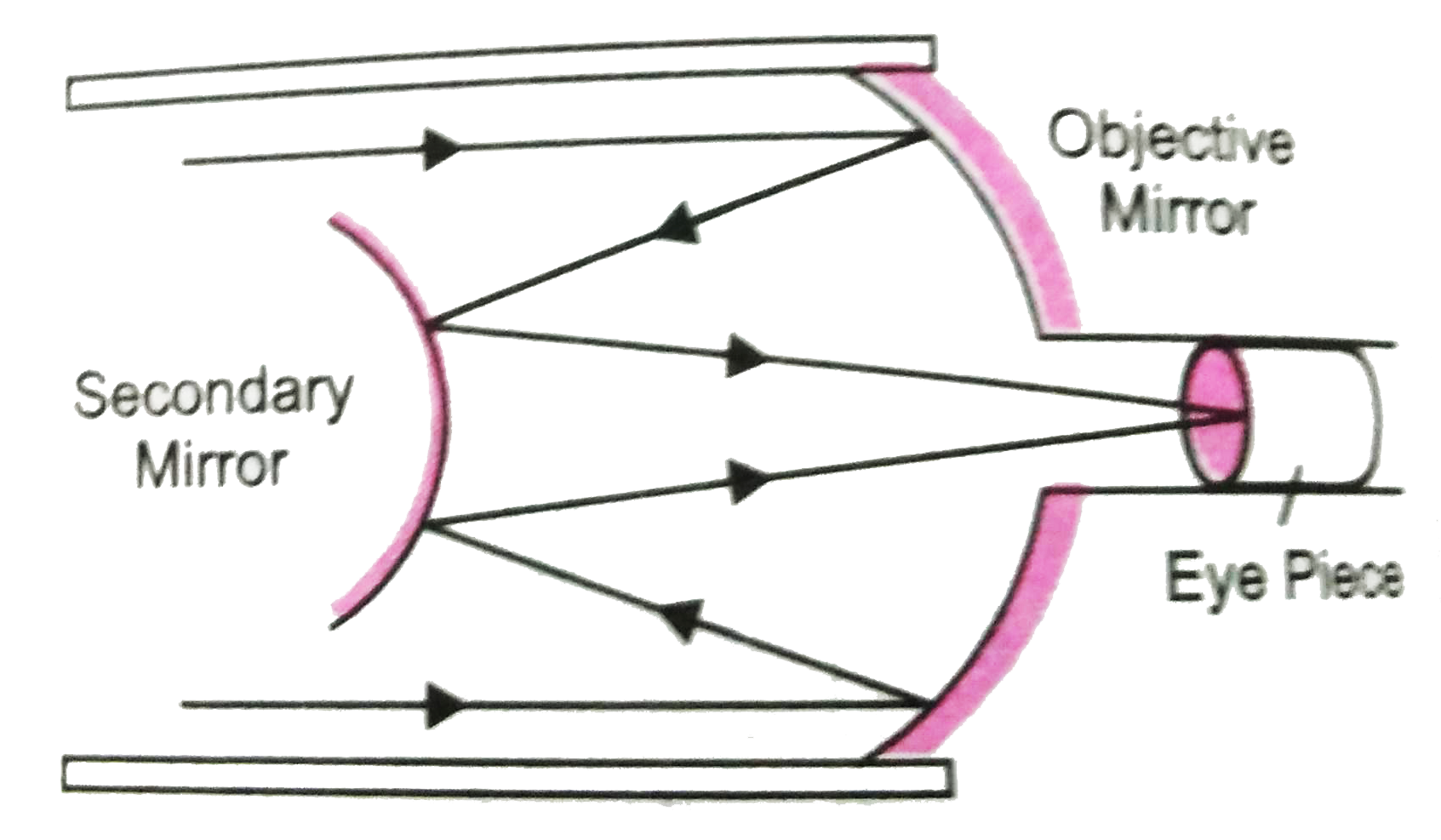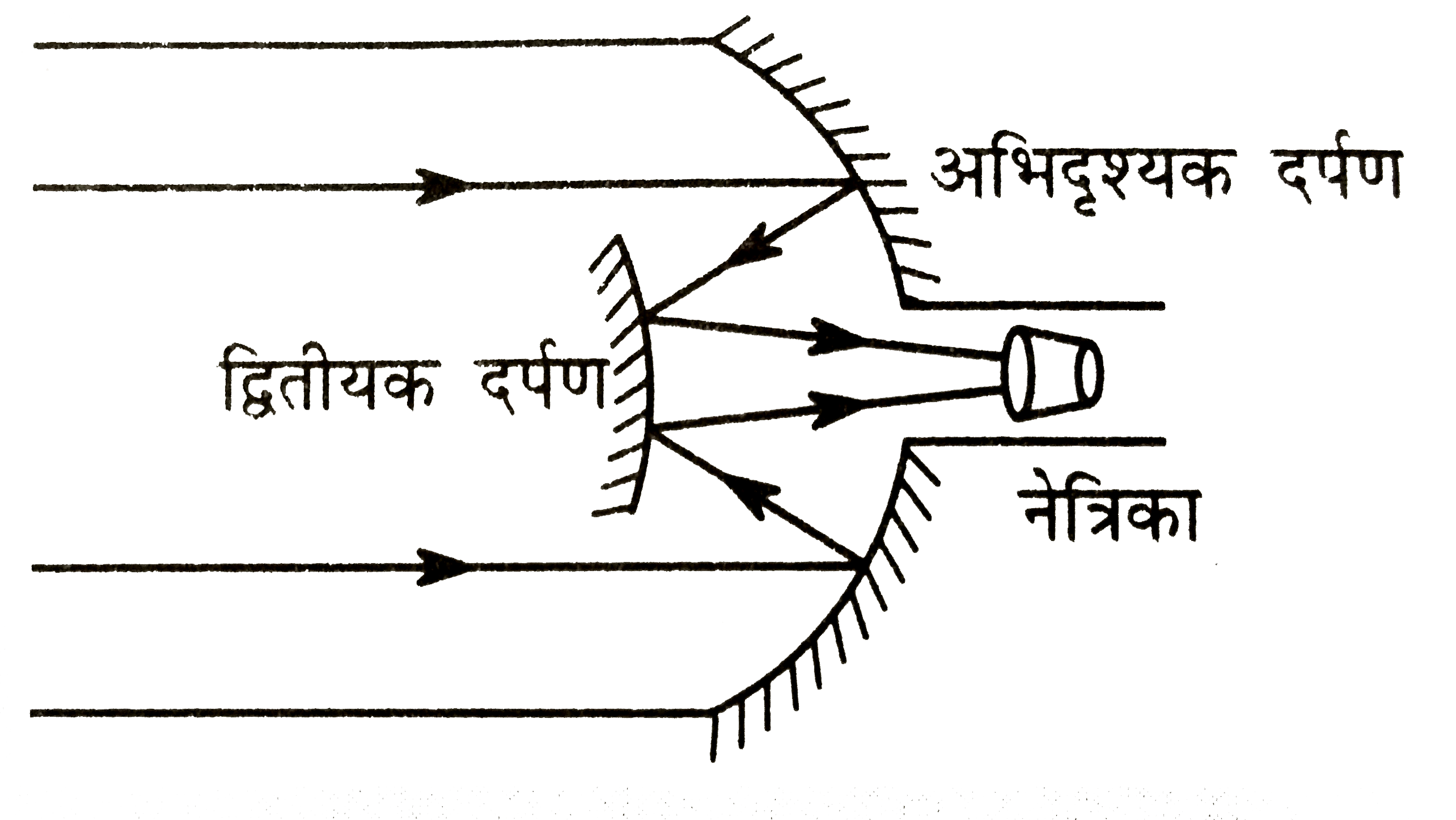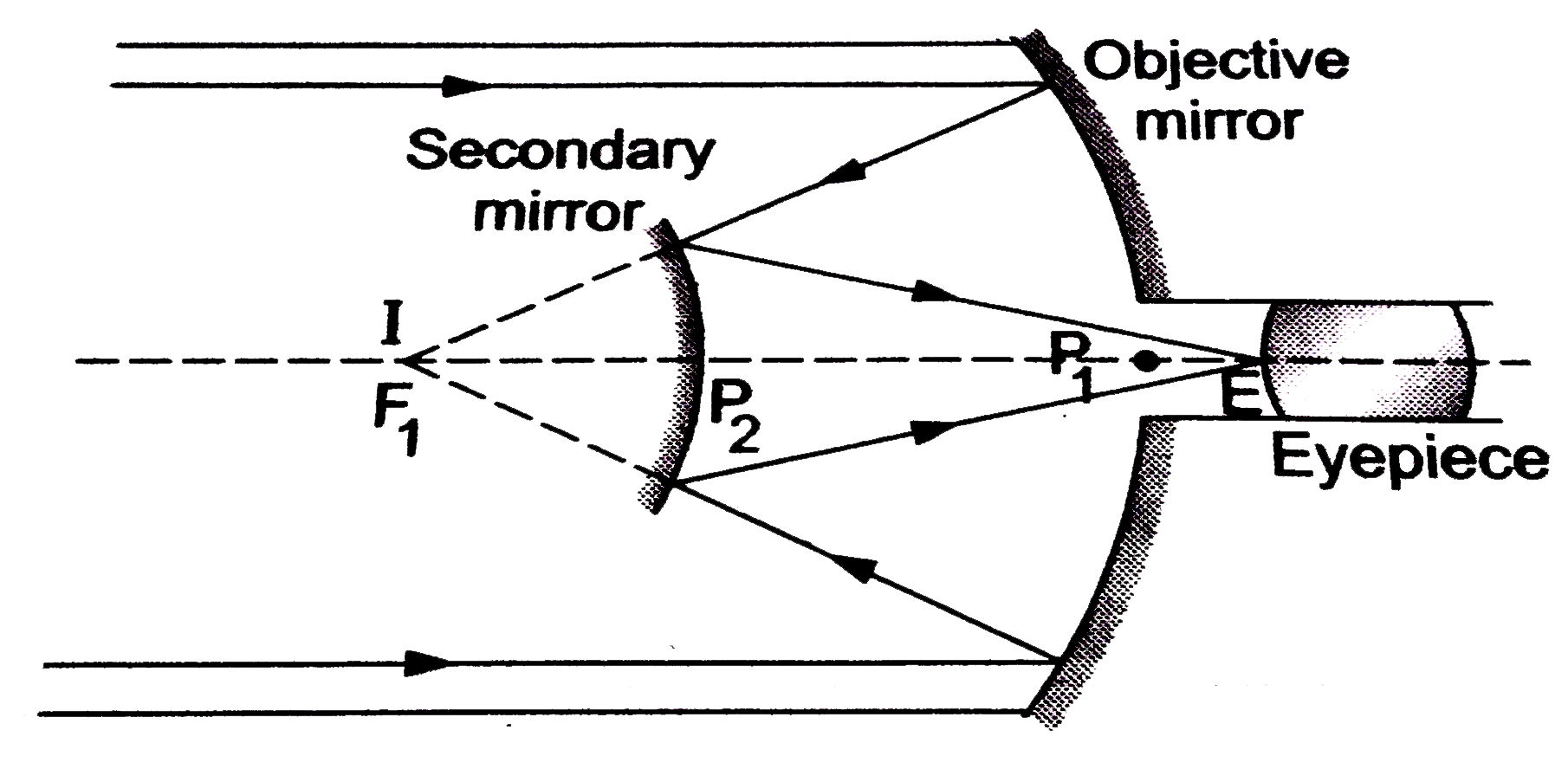A Cassegrain telescope uses two mirrors as shown in Fig. 9.33. Such a telescope is built with the mirrors 20mm apart. If the radius of curvature of the large mirror is 220mm and the small mirror is 140mm, where will the final image of an object at infinity be?Solution in Punjabi
Step by step video & image solution for A Cassegrain telescope uses two mirrors as shown in Fig. 9.33. Such a telescope is built with the mirrors 20mm apart. If the radius of curvature of the large mirror is 220mm and the small mirror is 140mm, where will the final image of an object at infinity be? by Physics experts to help you in doubts & scoring excellent marks in Class 12 exams.
Updated on:21/07/2023Topper's Solved these Questions
Similar Questions
Two stable isotopes of lithium 63Li and 73Lihave respective abundances of 7.5% and 92.5%. These isotopes have masses 6.01512 u and 7.01600 u, respectively. Find the atomic mass of lithium.
View SolutionIn an n-type silicon, which of the following statement is true:
View SolutionA Cassegrainian telescope uses two mirrors as shown in Fig. Such a telescope is built with the mirrors 20mm apart. If the radius of curvature of large mirror is 220mm and the small mirror is 40mm, where will the final image of an object at infinity be ?

View SolutionAn object is placed at a large distance in front of a concave mirror of radius of curvature 40 cm. The image will be formed in front of the mirror at a distance of :
View Solutionएक अवतल दर्पण की वक्रता-त्रिज्या 20 सेमी है। कोई वस्तु अवतल दर्पण से 15 सेमी की दुरी पर है। दर्पण से वस्तु के प्रतिबिम्ब की दुरी ज्ञात कीजिए।
View Solutionकिसी कैसेग्रेन दूरबीन में चित्र में दर्शाए अनुसार दो दर्पणों का प्रयोग किया गया है| इस दूरबीन में दोनों दर्पण एक-दूसरे से 20 सेमीo दूर रखे गए है |यदि बड़े दर्पण की वक्रता त्रिज्या 220 मिमीo हो तथा छोटे दर्पण की वक्रता त्रिज्या 140 मिमीo हो तो अनन्त पर रखे किसी बिम्ब का अन्तिम प्रतिबिम्ब कहाँ बनेगा ?

View SolutionAssertion :- In a cassegrain telescope objective mirror is parabolic in place of spherical
Reason :- No chromatic aberration in parabolic mirror
View SolutionA cassegrain telescope is built with the mirrors 20 mm apart. If the radius of curvature of the larger mirror is 220 mm and the small mirror is 140 mm. where will the final image of an object at infinity be ?
View Solutionकिसी कैसेग्रेन दूरबीन में चित्र में दर्शाए अनुसार दो दर्पणों का प्रयोग किया गया है । इस दूरबीन में दोनों दर्पण एक -दूसरे से 7cm दूर रखे गए हैं। यदि बड़े दर्पण की वक्रता -त्रिज्या 22cm तथा छोटे दर्पण की वक्रता -त्रिज्या 14cm हो ,तो अन्नत पर रखे किसी बिंब का अंतिम प्रतिबिंब कहाँ बनेगा ?

View SolutionA Cassegrain telescope is built with mirrors 20 mm apart. If the radius of curvature of the large mirror is 220 mm and the small mirror is 140 mm, then where will the final image of an object at infinty be?
View Solutionकिसी कैसेग्रेन दूरबीन में दर्शाए अनुसार दो दर्पणों का प्रयोग किया गया है | इस दूरबीन में दोनों दर्पण एक - दूसरे से 20mm दूर रखे गए है | यदि बड़े दर्पण की वक्रता त्रिज्या 220mm हो तथा छोटे दर्पण की वक्रता त्रिज्या 140mm हो तो अनंत पर रखे किसी बिंब का अंतिम प्रतिबिंब कहाँ बनेगा ?
View Solution_______ mirrors are used in relfecting telescope.
View SolutionA Cassegrain telescope uses two mirrors of radii of curvature 220 mm and 140 mm. The distance b/w the two mirrors is 20 mm. Where will the final image of an object at infinity be?
View SolutionA Cassegrain telescope uses two mirrors. Such a telescope is bult with the mirrors 20mm apart. If the radius of carvature of the large mirror is 220mm and the small mirror is 140 mm, where will the final image of an object at infinity be ?
View SolutionIn a Cassegrainian telescope, ……………………. is a large concave mirror.
View SolutionA Cassegrain telescope uses two mirrors as shown in Fig. 9.30. Such a telescope is built with the mirrors 20mm apart. If the radius of curvature of the large mirror is 220mm and the small mirror is 140mm, where will the final image of an object at infinity be?
View Solution
